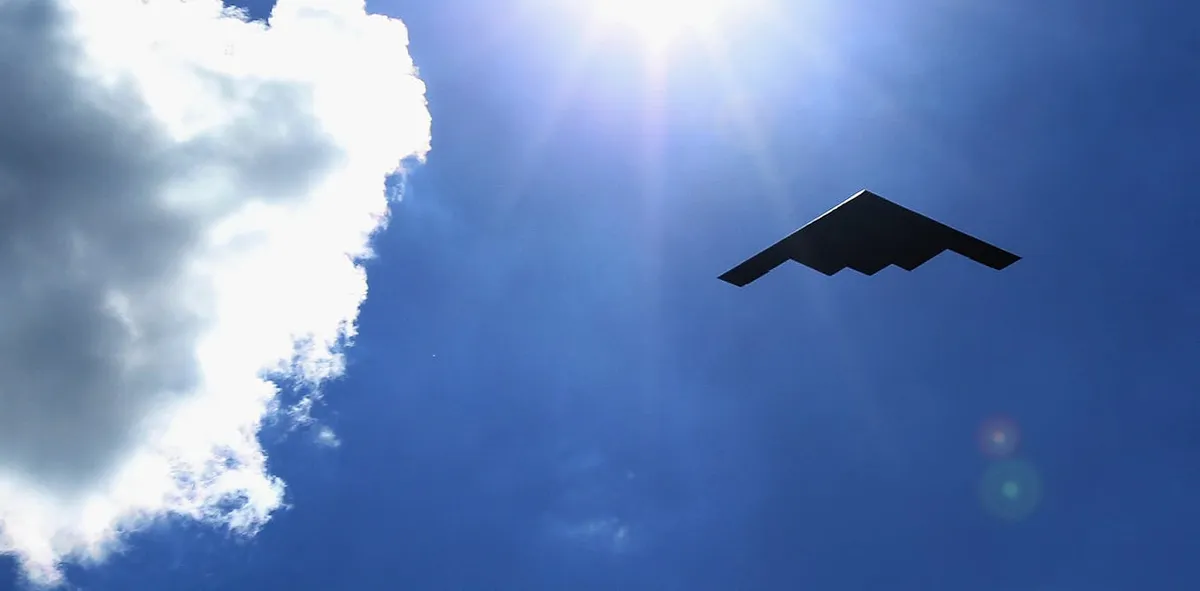
Late on Saturday night, local time, the United States executed significant military strikes against Iranian nuclear enrichment sites located at Fordow, Natanz, and Isfahan. This action represents the US’s overt involvement in the ongoing conflict between Iran and Israel. The US military claimed to have launched 30 submarine-launched missiles targeting the facilities in Natanz and Isfahan, alongside deploying over a dozen “bunker buster” bombs at Fordow and Natanz.
The bombs employed in this operation include the formidable GBU-57 Massive Ordnance Penetrator (MOP), which weighs approximately 13.5 tonnes. These bunker busters are specifically engineered to penetrate deep underground, effectively targeting heavily fortified facilities that standard bombs cannot reach. Unlike conventional explosives that detonate upon surface impact, bunker busters burrow into the ground to maximize their destructive force underground.
Iran's nuclear enrichment sites, such as Fordow, Natanz, and Isfahan, are constructed several meters below the surface, with Fordow estimated to be about 80 meters deep and protected by layers of reinforced concrete and soil. This depth necessitates the use of advanced munitions like the MOP to ensure effective damage.
The MOP is recognized as the largest non-nuclear bomb in the US arsenal, capable of penetrating depths of up to 60 meters under optimal conditions. While the precise number of MOPs in the US inventory remains undisclosed, estimates suggest that there are around 20 in total. Reports indicate that approximately 14 MOPs may have been utilized in the recent strikes on Iran, indicating a substantial commitment from the US military.
While other nations possess bunker-busting weaponry, the MOP's size and weight necessitate specialized bombers for deployment. Currently, only the B2 stealth bomber is equipped to carry the MOP, with each B2 capable of transporting a maximum of two at a time. For this operation, around seven of the 19 operational B2 bombers were deployed. Discussions have arisen regarding the potential modification of larger transport aircraft, such as the C-130 Hercules, to accommodate MOPs, but this remains a theoretical consideration.
The Trump administration has expressed concerns that Iran could be mere weeks away from developing a nuclear weapon, prompting a sense of urgency to target Iranian nuclear enrichment facilities. This assertion, however, contrasts sharply with assessments from the US intelligence community. Notably, Israel lacks the sophisticated bunker-busting capabilities required to effectively damage the fortified sites at Fordow, Natanz, and Isfahan, making the MOP an indispensable option for the US military.
The US has claimed that these sites have been comprehensively destroyed, but definitive confirmation of this assertion remains elusive. Furthermore, there is a possibility that Iran may possess additional, undisclosed nuclear sites elsewhere in the country.
In response to the strikes, the US has reportedly communicated through diplomatic channels to clarify that this attack was a singular event, not indicative of a broader plan for regime change. The forthcoming weeks could see various reactions from Iran, including retaliatory strikes against Israel or US forces in the region. Additionally, there is a risk that Iran might disrupt shipping routes in the Strait of Hormuz, which would have significant economic repercussions due to its impact on global oil supplies.
Alternatively, Iran may choose to capitulate and take measures to demonstrate a cessation of its nuclear program. However, such capitulation does not necessarily imply the termination of Iran’s nuclear ambitions.
A more pressing concern is that the US attack may intensify Iran’s resolve to pursue nuclear capabilities. The absence of nuclear weapons previously left Iran vulnerable to military actions like the recent strike. Historical precedents suggest that nations lacking nuclear deterrents, such as Ukraine, Iraq, and Libya, have faced severe military interventions. In contrast, North Korea, which successfully tested its first nuclear weapon in 2006, has not faced serious military threats since.
Iran may still possess the means to produce significant quantities of weapons-grade uranium and could aim to develop a compact nuclear device comparable to those used in Hiroshima and Nagasaki. Depending on the extent of the damage inflicted by US strikes and the status of its facilities, Iran might conclude that acquiring nuclear weapons is its best strategy for ensuring national security.